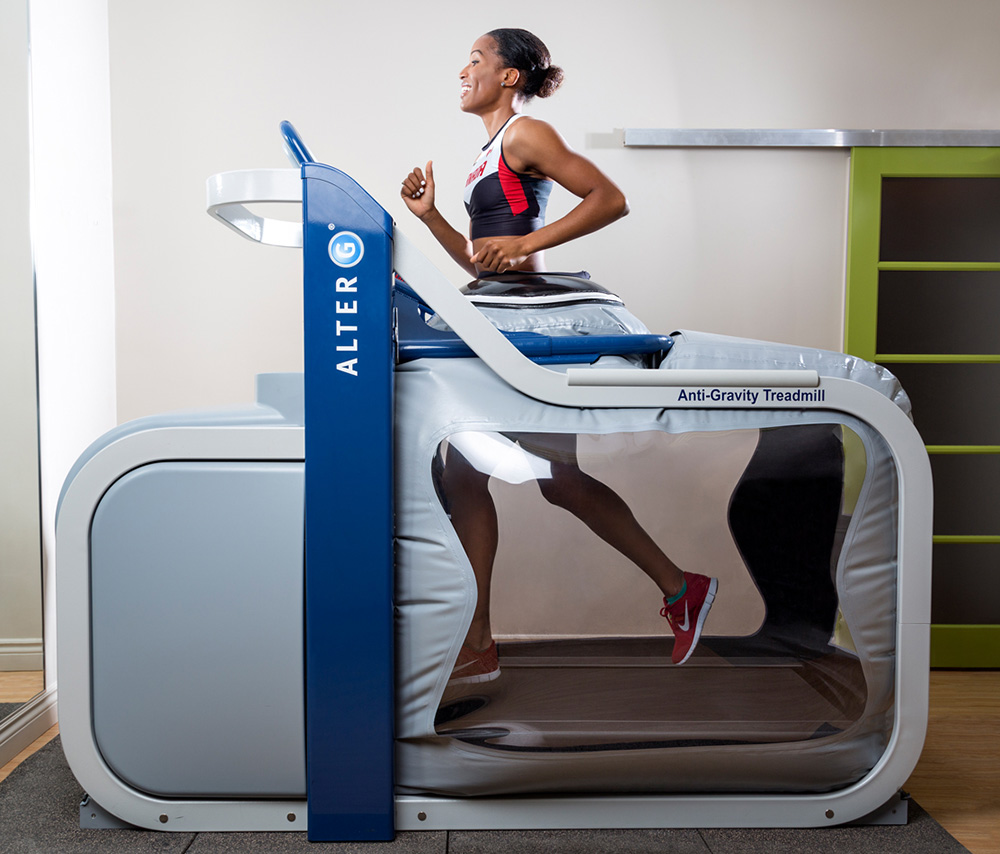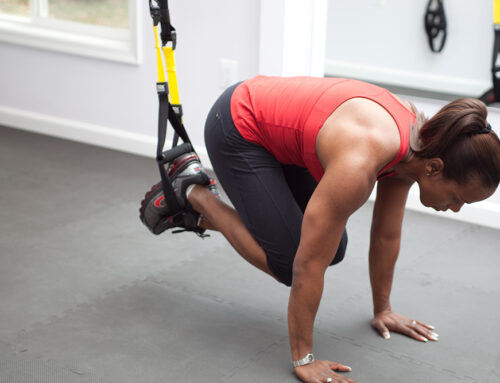From the Los Altos Town Crier, February 20, 2013.
Written by Diego Abeloos
Treading lightly: Local therapist’s antigravity treadmill popular with rehab patients, runners
Los Altos physical therapist Colleen O’Kane lightens the load for her patients – literally.
That’s because O’Kane, owner of Bodies in Motion Physical Therapy and Fitness in Los Altos, is the proud owner of an AlterG Anti-Gravity Treadmill for therapy. According to O’Kane, the machine – which uses NASA technology that allows partial weight-bearing assistance – has proved a worthy investment since she purchased it 18 months ago.
The 23-year veteran physical therapist said she bought the machine as a useful tool in her effort to help patients rehabilitate pain-free from injuries to their lower extremities. O’Kane’s practice is one of only five located within the Los Altos, Palo Alto and Mountain View area currently using the AlterG treadmill.
“We use this for a huge number of purposes – backs, hips, knees, feet and ankles,” said O’Kane, whose eight-year physical therapy practice is located at 851 Fremont Ave., Suite 114. “Basically, it’s for anyone with lower-body injuries.”
The lower body of the treadmill user initially is secured in a pressure-controlled air chamber, temporarily rendering them in a state of weightlessness – an effect similar to what NASA astronauts experience when training for space walking. A therapist (or the user) then calibrates the specific percentage of body weight the user can bear during a rehabilitation session, effectively decreasing the pounding and wear on lower-body joints.
“The only way I can explain it is that the sensation is similar to walking in water,” said O’Kane, who noted that she uses the treadmill regularly to help therapy patients recovering from anterior cruciate ligament surgeries, among other procedures. “The benefit is that you don’t have the resistance you do in water, so you can work on things like correcting your gait.”
O’Kane also acquired a video system for the treadmill, which includes an eye-level screen so that users can correct their strides in real time.
“It’s real-time feedback about what’s happening with your form, so that we can make changes right there on the spot,” O’Kane said. “The first part of changing those patterns and habits for patients is mental.”
As patients progress in correcting form, gaining strength and muscle memory, more weight is applied incrementally. Once a patient can bear full body weight, the rehabilitation process typically advances to machine-free activities such as outdoor walking and running on trails or tracks.
For some patients – particularly those experiencing longtime limitations – using the AlterG for the first time, is an emotional experience, O’Kane added.
“I’ve actually had people cry because they just haven’t been able to walk at a reasonable pace for a number of years,” she said.
While O’Kane purchased the antigravity treadmill with her patients foremost in her decision, she has discovered that local long-distance runners and other athletes seeking variety in training methods have an interest in the machine. Several runners regularly book time on the treadmill for the purpose of eliminating a few miles of wear and tear on their bodies.
“For most of the runners who come in, it cuts their pounding mileage on the pavement,” she said. “They still do 60 to 80 miles per week, but they’ll now do 15 miles or so here once or twice a week.”
O’Kane said she’s fortunate to see the benefits her AlterG treadmill provides to patients and weekend warriors alike.
“It’s been a great investment,” she concluded. “We just want to get more people on it and show them how it can help their rehab or training. It’s been life changing for so many people.”


